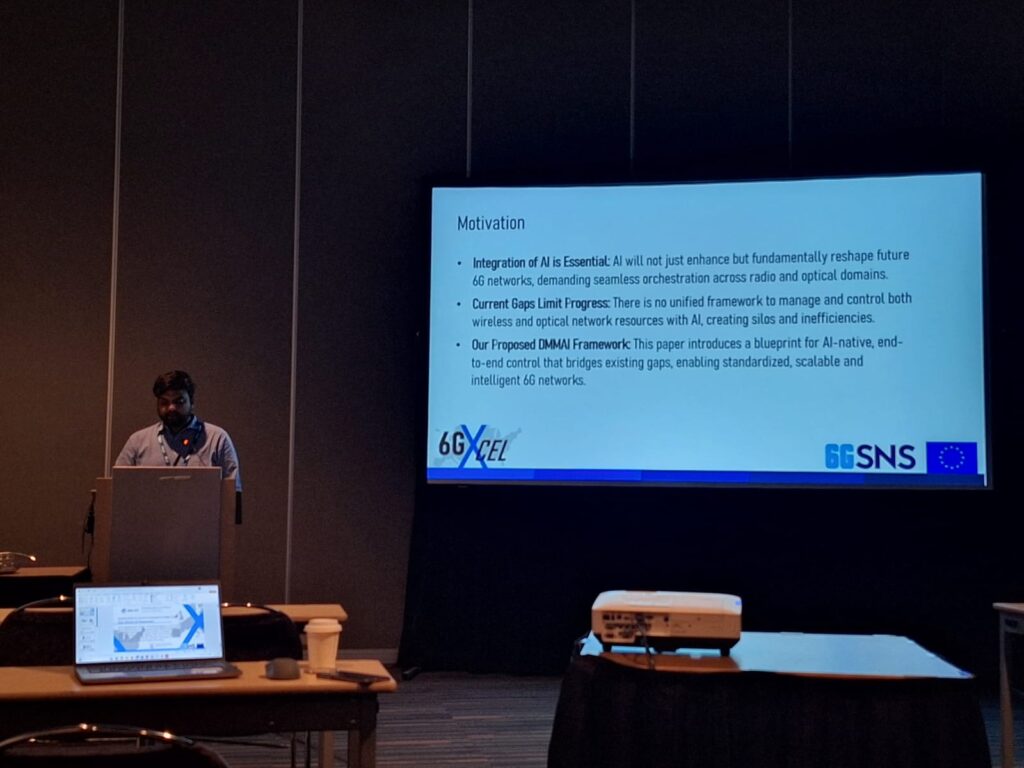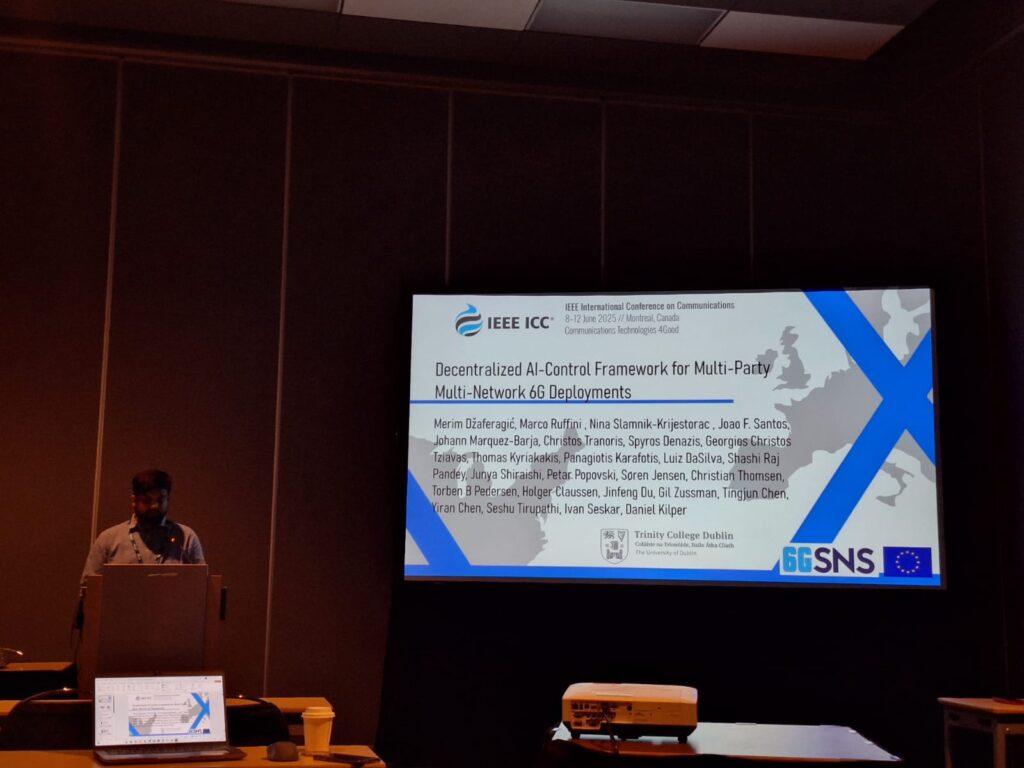6G-XCEL team participated in : IEEE International Conference on Communications 2025 on 8–12 June 2025 in Montreal, Canada. The team presented two papers as described by TCD team below:
- Design and Analysis of Power Consumption Models for Open-RAN Architectures: In this paper, we develop a transaction-based analytical framework to estimate the power consumption of Open RAN (O-RAN) architectures under realistic deployment scenarios. Our approach captures both processing and transmission energy by modeling how user traffic flows through the network, from the radio unit to centralized data centers and how the location of baseband processing (at the O-RU, O-DU, O-CU, or DC) impacts overall energy use. We incorporate equipment-level specifications, fanout limitations, and overprovisioning factors to reflect the complexity of real-world systems. The results reveal how centralization, resource sharing, and architectural decisions interact to shape the power profile of the network. This work not only highlights the critical role of processing node placement in energy efficiency but also offers operators a practical tool to guide future O-RAN planning and deployment strategies. Particularly as the industry moves toward more sustainable 5G and 6G infrastructures.
- Decentralized Multi-Party Multi-Network AI for Global Deployment of 6G Wireless Systems: This paper introduces the DMMAI framework for integrating AI across both radio and optical domains in 6G networks. It focuses on enabling decentralized, intelligent network control and coordination, moving beyond traditional data transport models. The framework is designed to support scalable AI-based management and orchestration across different network layers and environments, with a structure that allows for immediate use and future expansion.

